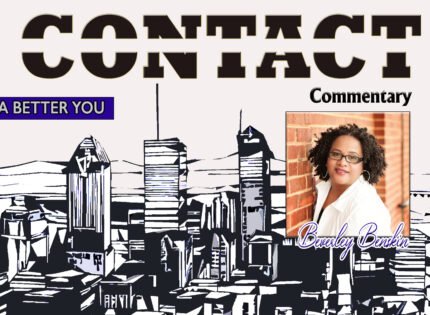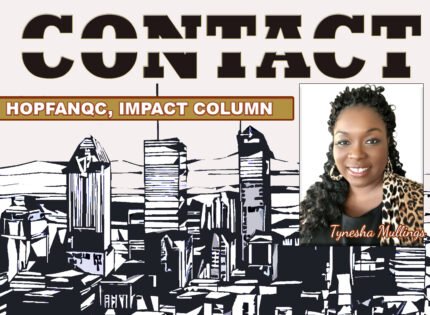HISTORY
Professor came i nto a crowded barbershop and turned off the television. Everybody looked at him.
nto a crowded barbershop and turned off the television. Everybody looked at him.
“I’m ashamed of you,” he told Oletymer. “This place is crowded and you’re all watching Dr. Oz.”
“I’m outnumbered,” Oletymer said.
“What’s so important?” Professor said. “Don’t you know what month it is? It’s February, Black History Month. This is more important than Dr. Oz.” Everybody agreed, and there was an Amen from everybody.
Professor said, “If you remember, back in the day, in Montreal, your minister was Rev. Charles Este at the Union United Church, and you went to church twice on Sunday. 11 AM and 7 PM. And they attended Sunday school in between. There was a Black Community back then.”
When the Montreal General Hospital was in the location where China town now is. There was no Cote St. Luc. The area was a farm or as they say “a cow patch.”
When you were on St. Catherine Street and you saw someone you knew, you would say, “Are you going back downtown? Downtown meant St. Antoine Street, which at the time was called the Black Community, and rightly so. The houses were very expensive, $4,000, now they are $650,000 (2015).
At the same time, the Jewish community in Montreal did not have it easy, but they were organized, unlike the Black community – economically speaking.
Blacks must develop a cultural sense of business, if they had this sense of business, we Blacks would still have the NCC, Black Studies Centre, our OWN reception hall, a church that holds over 1,200 people… Blacks would own our own regulation size recreation center. The NCC was not a recreation centre but still produced good and great athletes.
Back in the day, you could get the same piano teacher that taught the great Oscar Peterson and Dr. Oliver Jones how to play, Daisy Peterson-Sweeney, the sister of Oscar Peterson.
Back in the day, most Blacks in Montreal lived between Peel Street and just west of Atwater Ave., St. Antoine Street and Notre Dame Street. That was called the Black community, why? Because many Blacks were employed on the railroad, which had its head office at Windsor station. Families were able to buy homes and paid their bills by working on the railroad and at Dorval Airport.
Back then there was no LaSalle like there is now, you could buy a duplex for $45,000, that’s right, only $45,000, now the same house is worth about $350,000, that’s right $350,000.
In 1974, the Southwest area of Montreal not only fell below the poverty level, many of the residents were prisoners of pervasive “learned helplessness and hopelessness.” Poverty was the landlord; crime and powerlessness were the tenants.
During the summer, because there were no basketball courts (Ask Aubrey Merriman, he will tell you) we took three car tires, filled them up with bricks, placed them on top of each other and put a stick in the middle with an improvised basketball net made from a tire rim. Aubrey Merriman will tell you, from this humble and creative beginning, we were able to reach an entire generation of St. Henri/Little Burgundy youth.
At that time, the annual income in the area was $4,920 (Statistics Canada), the juvenile delinquency ratio ranged from 60% to 80%, the highest in Montreal. Theft and poverty damage accounted for the majority of the crimes committed. That’s right, back in the day Little Burgundy/St. Henri had the highest crime rate in Montreal (Statistics Canada).
Even before the former organization of a group in the area in 1976, we were raising money from Chabanel Street, the clothing district, to send youngsters to overnight camps, and address family crises and community needs. This is one of the reasons why the Westend Sports Association was started. And they still have their food bank.
At that time, the idea of raising money to send inner-city youngsters to sport camps and helping them to secure athletic scholarships (and in many cases helping to pay for tuition, books and other expenses) was a foreign concept. For three decades no other grassroots organization could rival the level of services provided to urban youth in Southwest Montreal. None!
When you meet Aubrey Merriman and Trevor Williams they will tell you, so will others.
There was an Amen from the Ways and Means Committee.
Welfare Wesley said, “I knew all about the Westend Sports Association; my parents used to go to their food bank years ago when nobody else would help us.
There was an Amen in the barbershop.
Dropout said “Listen to me, I was listening to some people talk; they were mopping floors and started talking bad about Blacks. I interrupted the conversation and told them, “Listen, if it wasn’t for Thomas W. Stewart, who invented the Mop, June 11, 1893, you would be on your knees mopping this floor.
And when your wife is using an ironing board, remember it was Sarah Boone, December 30, 1887, who invented it. There was an Amen…
The article states, “… it was a heartfelt plea from one of the province’s oldest minority communities: Help us better integrate and feel like citizens to stop the exodus. Representatives of Montreal’s Black Anglophone community… Who are these representatives…? Judge Juanita Westmoreland? Lawyer Steven Simmons? Joe and Yvonne from St. Mary’s Hospital? George Grant? Dr. Charmaine Nelson?
Remember a group that called itself the Matthew DaCosta… that went to the government, told them a story, and the government gave them one million dollars, for what?
A few years later the same group became magicians; the money disappeared. Up to this day nobody knows what happened to the million dollars.
Those people comprising the “Round Table” mean well, but why should the government give anybody any money. Yes, they will match you–you raise one million and they will give you one million to run your project. This makes a lot of sense.
The government gave the Black Studies Centre; it’s gone. The longest-serving president of the place sold it. Why? His answer was “I don’t think the Community gives a S##T. Community Contact September 19, 2013.
When you read the article in the Gazette January 30, 2015, you know something is wrong when the president of the Round Table on Black History Month “[…] calls on the government to act on all fronts to improve the quality of life, including re-launching the recently closed Negro Community Centre.
The president means well by asking these questions, or telling the government the sad situation of the 185,000 Blacks in Montreal, and it’s a sad situation. Remember what writer Bryan Bishop said in Community Contact December 18, 2014 “I am not sure what the prognosis is for the next 100 years, but if past performance is an indicator of future
Behaviour we’re in serious trouble.”
You have to think seriously about what Brian Bishop wrote, and look at who is on the Round Table.
Those people had an opportunity to talk to and with the Quebec government in Quebec City. Here is a bit of what they told the government representatives, “Do you see many (Black) waiters in restaurant in Quebec coming to serve? If they’re working in the restaurant, they’re working in the kitchen.” Now if you do not believe what I’m saying, Google it; it’s on page A3 (Montreal Gazette, January 30, 2015). The government representatives and reporters must’ve thought those people are comedians from the Just For Laughs Festival.
Montreal used to be a World Class city if you were here back in the day. Expo 67, Olympics 1976, Jackie Robinson, it’s not the same anymore. All of the Black institutions are gone, along with the Black Community. Montreal is very fortunate to have Community Contact, so the 185 thousand Black Montrealers can read what’s going on and what’s not going on in Montreal where Blacks are concerned. Example, we discovered Dr. Charmaine Nelson in Community Contact, and she was a great discovery. People like her should be the head of a Round Table. She knows what’s going on. And has the endorsement of the Ways and Means Committee. There was an “Amen” from everybody in the barbershop.














